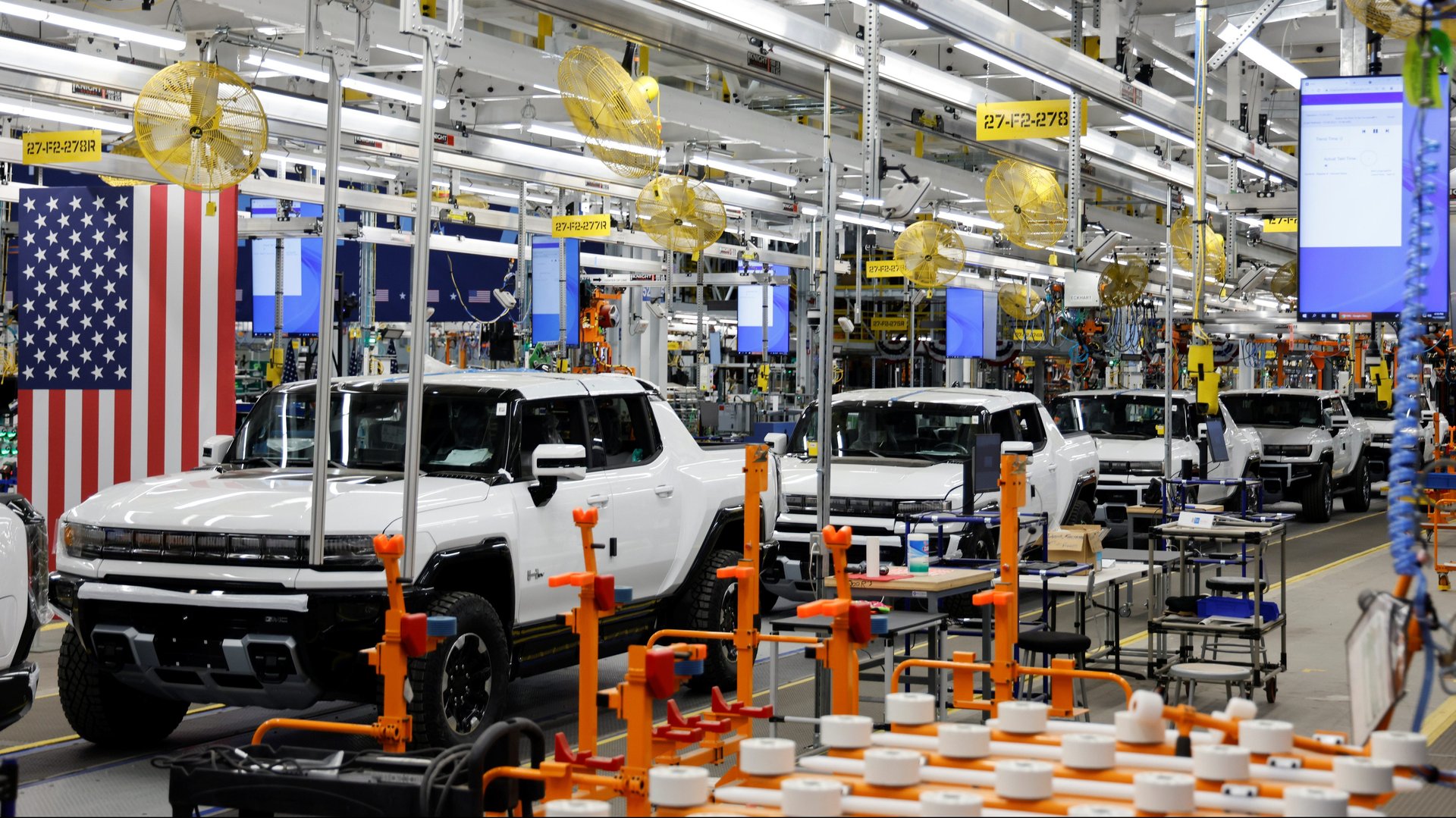Big electric trucks and SUVs are the new gas guzzlers
New lines of electric trucks and SUVs are hitting the roads. Automakers are marketing vehicles like Tesla’s Cybertruck, Ford’s F-150 Lightning, Rivian’s R1T pickup truck, and GMC’s Hummer EV to customers who prefer driving big vehicles, no matter their fuel efficiency. These new EVs promise drivers the same heavy-duty performance as a combustion engine without burning a drop of oil, with marketing materials that boast of their horsepower, torque, and “watts to freedom” acceleration.


New lines of electric trucks and SUVs are hitting the roads. Automakers are marketing vehicles like Tesla’s Cybertruck, Ford’s F-150 Lightning, Rivian’s R1T pickup truck, and GMC’s Hummer EV to customers who prefer driving big vehicles, no matter their fuel efficiency. These new EVs promise drivers the same heavy-duty performance as a combustion engine without burning a drop of oil, with marketing materials that boast of their horsepower, torque, and “watts to freedom” acceleration.

But as EVs get bigger, they consume more energy—and, indirectly, generate more carbon emissions. EVs charge their batteries by plugging into power grids, which generate most of their electricity by burning fossil fuels: Coal, oil, and natural gas account for nearly two-thirds of global electricity production. Until electric utilities transition from fossil fuels to renewable power sources like wind and solar—which, even under ambitious targets, won’t happen until the 2030s—the most extreme EVs will generate carbon emissions rivaling some hybrid and gas-powered cars.
But even these inefficient EVs can play a role in cutting carbon emissions, if they can convince people who drive gas-guzzling cars and trucks to go electric.
Comparing EV emissions to gas-powered cars
For decades, regulators have assigned hybrid and gas-powered cars a miles per gallon (MPG) rating, which gauges a car’s fuel efficiency by measuring how many miles it can drive on one gallon of gas. Regulators give EVs a comparable “miles per gallon equivalent” (MPGe) rating, which measures how far an EV can drive on 33.7 kilowatt-hours of electricity (roughly the same energy content as a gallon of gas).
The electric Hummer, for example, has an efficiency rating of 47 MPGe. That’s better than the best-selling gas-powered car on the market, the Toyota Corolla, which gets 30 MPG. But it’s nearly three times less efficient than the best-selling electric car on the market, the Tesla Model Y, which gets 125 MPGe.
Miles per gallon is a consistent measure of a car’s carbon emissions. Burning a gallon of gasoline will always release about 8,887 grams of carbon dioxide, according to the US Environmental Protection Agency. So, a Ford F-150 will emit about 444 grams of CO2 on average for every mile it drives, no matter where it is.
But MPGe is a fuzzier measure of a car’s carbon footprint, because generating a kilowatt-hour of electricity will create different levels of carbon emissions depending on the mix of fuel sources a power utility uses. Globally, producing a kilowatt-hour of electricity emits an average of 475 grams of carbon dioxide, but the figure varies widely from region to region. For example, the average is lower in the EU (231 grams) than in the US (about 386 grams). So, the same EV will create 40% fewer carbon emissions in the EU than in the US.
Nearly every EV on the market will produce fewer carbon emissions than a gas-powered car, no matter where you charge it—except for the electric Hummer. If charged on the global average power grid, the 4.5-ton Hummer EV is worse for the climate than many smaller, more efficient cars that burn gas.
But even energy-guzzling EVs can help cut the transportation sector’s carbon emissions, because there are (relative) climate benefits from electrifying the least efficient cars and trucks.
The Hummer EV, for example, generates 62% fewer carbon emissions than the gas-powered Hummer H1. Drivers who switch from a gas-guzzling pickup truck to an electric one will cut their carbon emissions more, in relative terms, than switching from an efficient gas-powered sedan to an electric one.
“If you’ve ever talked to a guy who owns a big truck and you say, ‘You know what you should do? You should get a Nissan Leaf,’ he’s going to laugh in your face,” said Sara Baldwin, director of electrification policy at the Energy Innovation think tank. “I’ve been doing this work for 17 years and I’ve come to terms with the fact that you just can’t change people’s minds on everything. So let’s just get them cars that are similar [to what they’re already driving] and make them as clean and sustainably built as possible.”